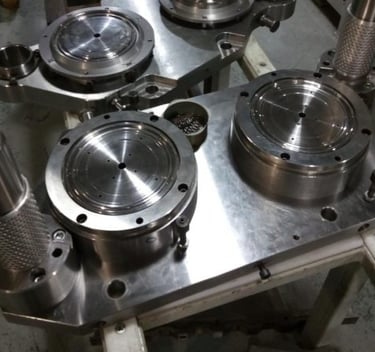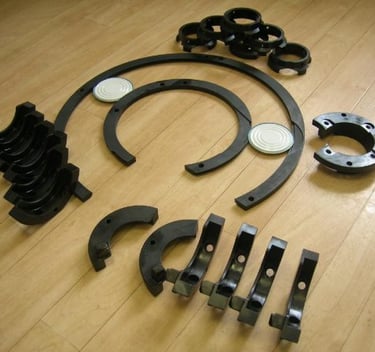Unlocking the Power of Precision: The Ultimate Guide to Industrial Stamps, End Can Lines, and Cutting-Edge Equipment
INDUSTRIAL SUPPLIES
2/24/20253 min read


Introduction: Why Precision Matters in Manufacturing
In today's world of manufacturing, precision is the cornerstone of success. From stamps to specialized machines for body lines, every tool plays a crucial role in achieving the highest levels of quality. The global industrial sector is diverse, constantly evolving, and driven by innovation. Understanding the importance of advanced machinery, tools, and equipment is essential for businesses looking to stay ahead of the competition.
Stamps: The Hidden Heroes of Quality Control
When it comes to quality control, stamps are often an overlooked but essential part of the process. Stamps, whether they are used for marking, branding, or certification, offer both function and form. They ensure that products meet regulatory standards and are easily identifiable.
Stamps come in various forms—manual, automatic, and semi-automatic—depending on the needs of the manufacturing process. For industries such as pharmaceuticals, food and beverage, and automotive, these stamps provide critical information about batch numbers, expiry dates, and even certifications that signify product integrity.
End and Can Line Equipment: Streamlining Production Efficiency
End and can lines are at the core of many industries, particularly in packaging. These machines are designed to process, fill, and seal containers quickly and efficiently, often working in tandem with other production equipment to ensure seamless flow. The challenge for manufacturers lies in maintaining the balance between speed and quality, especially when dealing with different product types and packaging sizes.
The development of end and can line equipment has revolutionized how products are packaged, from food cans to chemical containers. Advanced machinery now boasts faster speeds, more versatility, and increased accuracy, reducing the likelihood of product defects. But achieving this level of precision requires high-quality tools and a deep understanding of machine capabilities.
Equipment for Body Lines: Ensuring Durability and Performance
Body line equipment is fundamental in industries such as automotive and heavy machinery. These machines are used for forming, welding, and assembling components that form the body of a product. Think of car bodies, machinery frames, or any complex structure where precision and durability are non-negotiable.
Body line equipment needs to withstand extreme pressures, temperatures, and materials. The introduction of robotic arms and AI-powered machines has greatly enhanced production capabilities, allowing for more accurate body forming and assembly. The future of body line equipment lies in automation, offering not just efficiency but also scalability.
Tools and Equipment for Seaming Machines: Crafting Perfect Seals
Seaming machines are indispensable when it comes to ensuring the integrity of sealed products. Whether it’s the tin can on your kitchen shelf or a medical device needing airtight packaging, seaming machines are the unsung heroes that make it happen. They join metal, plastic, or other materials to form perfect seals—preserving freshness, safety, and usability.
The tools used in seaming machines need to be durable, efficient, and precise. They also need to be adaptable to various materials and sizes. With advancements in material science and machine engineering, modern seaming machines can handle more complex tasks, providing a seamless experience for manufacturers and consumers alike.
Products and Machine Parts from Other Industries: A World of Versatility
While specialized tools and equipment dominate certain industries, products and machine parts from other sectors contribute to the overall machinery ecosystem. These parts come from diverse industries like construction, electronics, and agriculture, yet they are integral to the performance and longevity of manufacturing machines.
From high-tensile bolts to electronic sensors, parts sourced from various sectors help improve machine efficiency, prevent breakdowns, and extend service life. Often, manufacturers need to source components from different suppliers, which requires strong relationships and an in-depth understanding of cross-industry compatibility.
Conclusion: The Future of Industrial Machinery and Equipment
In conclusion, the evolution of machinery, tools, and equipment is a testament to the relentless pursuit of perfection in manufacturing. Whether you're dealing with stamps, end and can line equipment, body line machines, or seaming tools, it’s clear that technology has revolutionized the way products are made. The future lies in further innovations—faster, more precise, and more efficient equipment that will continue to push the boundaries of what’s possible.
For businesses, investing in high-quality machinery and tools is not just a matter of staying competitive but ensuring sustainability and excellence in every step of the manufacturing process.


